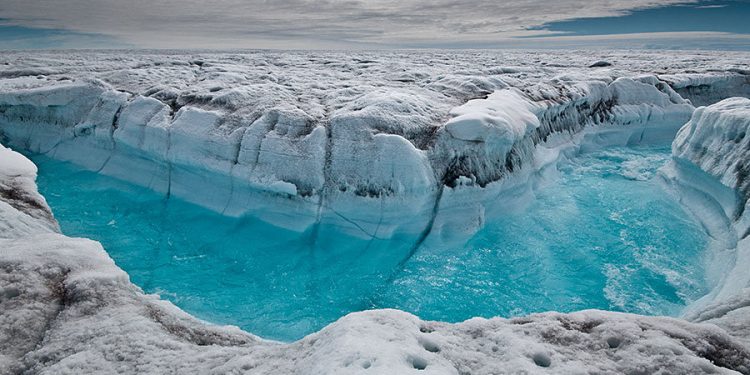Paris: Billions of tonnes of melted water flowing into the world’s oceans from the Greenland and Antarctic ice sheets could boost extreme weather and destabilise regional climate within a matter of decades, researchers said here, Thursday.
These melting giants, especially the one atop Greenland, are poised to further weaken the ocean currents that move cold water south along the Atlantic Ocean floor while pushing tropical waters northward closer to the surface, they reported in the journal ‘Nature’.
Known as the Atlantic Meridional Overturning Circulation (AMOC), this liquid conveyor belt plays a crucial role in earth’s climate system and helps ensure the relative warmth of the Northern Hemisphere.
“According to our models, this meltwater will cause significant disruptions to ocean currents and change levels of warming around the world,” said lead author Nicholas Golledge, an associate professor at the Antarctic Research Centre of New Zealand’s Victoria University of Wellington.
Most studies on ice sheets have focused on how quickly they might shrink due to global warming, and how much global temperatures can rise before their disintegration – whether over centuries or millenia – becomes inevitable, a threshold known as a ‘tipping point’. But far less research has been done on how the meltwater might affect the climate system itself.
“The large-scale changes we see in our simulations are conducive to a more chaotic climate with more extreme weather events and more intense and frequent heatwaves,” co-author Natalya Gomez, a researcher in the Department of Earth and Planetary Sciences at McGill University in Canada, told this agency.
“By mid-century,” the researchers concluded, “meltwater from the Greenland ice sheet noticeably disrupts the AMOC which has already shown signs of slowing down.”
The findings were based on highly detailed simulations combined with satellite observations of changes to the ice sheets since 2010.
One likely result of weakened current in the Atlantic will be warmer air temperatures in the high Arctic, eastern Canada and central America, and cooler temperatures over northwestern Europe and the North American eastern seaboard.
The Antarctic and Greenland ice sheets, up to three kilometres (1.8 miles) thick, contain more than two-thirds of the planet’s fresh water, enough to raise global oceans 58 and seven metres (190 and 22 feet), respectively, were they to melt completely.
Besides Greenland, the regions most vulnerable to global warming are West Antarctica and several huge glaciers in East Antarctica, which are far larger and more stable.
AFP






































